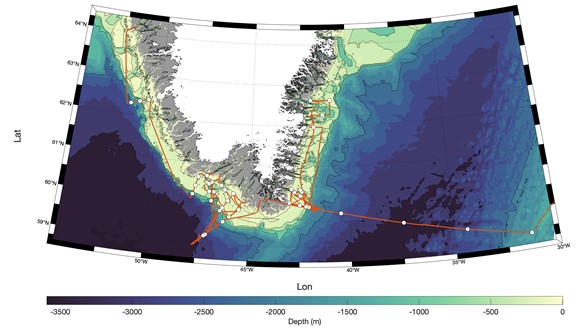We are seeking a highly motivated physical oceanographer for a postdoctoral position at Woods Hole Oceanographic Institution. The postdoc will work with a team of researchers on “Overturning in the Subpolar North Atlantic Program (OSNAP)”, the over-arching goal of which is to observe and understand the drivers of monthly-to-interannual variability in meridional fluxes of volume, heat and freshwater at subpolar latitudes in the North Atlantic.
The candidate should have experience in one or more of the following: analysis of moored current and temperature/salinity (T/S) observations, analysis of Lagrangian observations, and use of numerical model output with observations to build understanding of the relevant dynamics. Experience combining the above with other observational data sets (e.g., satellite altimetry and hydrography) to gain deeper understanding of the underlying physics is preferred. Expertise in meso-scale and large-scale ocean dynamics, and demonstration of completed research submitted or published in peer-reviewed journals is required.
The successful candidate will focus primarily on the analysis of a growing time series (2014-2024) from a transport-resolving current meter and T/S moored array in the Irminger Basin east of Greenland to develop a better understanding of the drivers of variability in transport and water properties of the Deep Western Boundary Current. A rich Lagrangian data set of deep acoustically tracked float trajectories, and observations from the Ocean Observatories Initiative’s Global Irminger Sea Array are also available to complement the moored observations. The postdoc is expected to include dynamical models as well as numerical model output where appropriate to extend the interpretation of the observations. There are many collaboration opportunities, with the OSNAP PIs at WHOI as well as with the U.S. and international OSNAP community virtually and at workshops. Further details of the research undertaken by the successful candidate will be determined by mutual agreement according to their experience and interests.
Additional information and instructions for applying can be found here:
